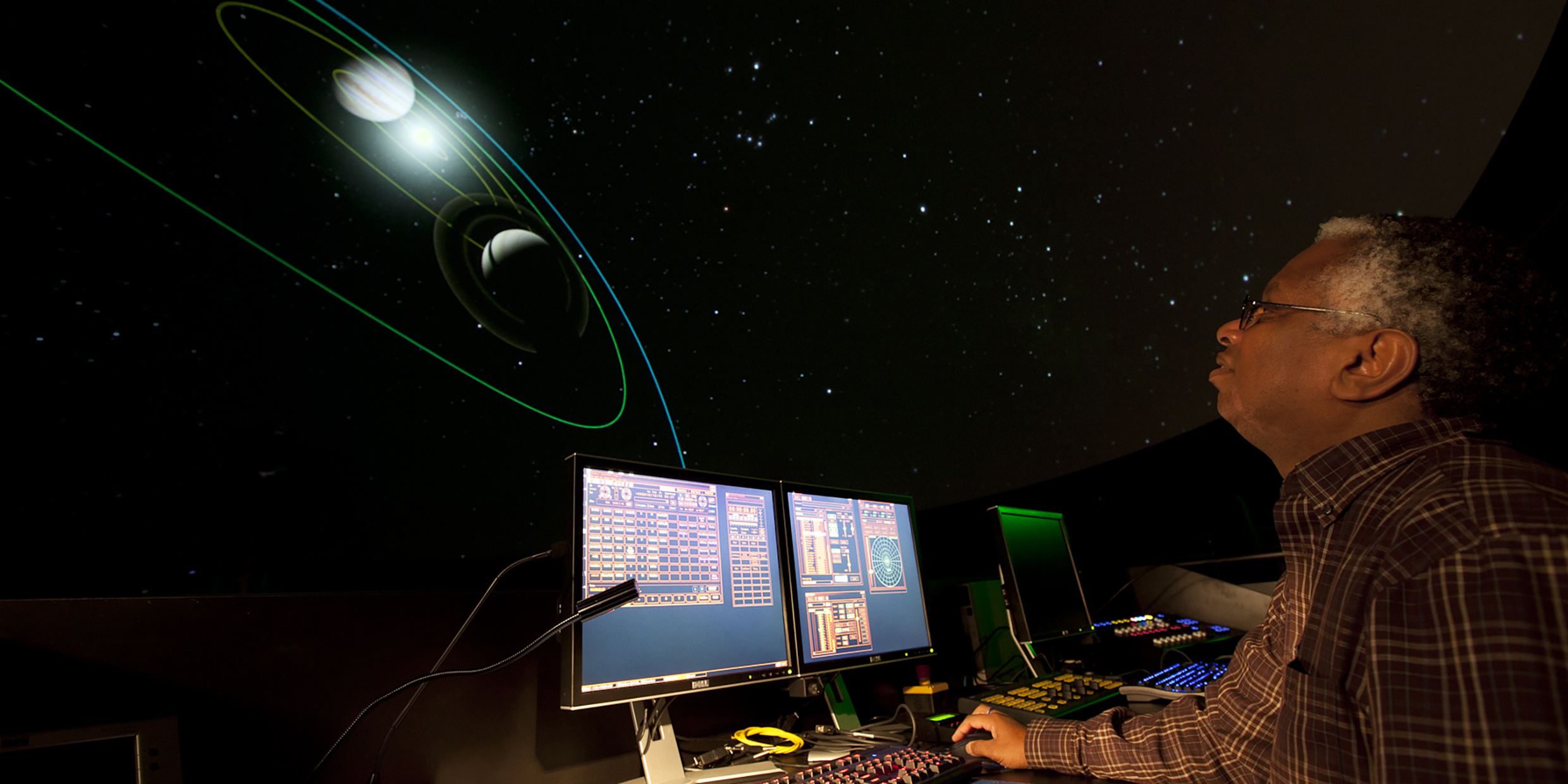Originally published 22 March 1993
Sputnik! America’s rude awakening.
When the Soviet’s hurled their beach-ball-sized satellite into space on October 4, 1957, this country’s vaulted illusion of scientific and technological supremacy came crashing to earth. The space age had begun on Soviet terms.
It was a wake-up call the nation didn’t ignore. Within months, our own Explorer and Vanguard satellites were in orbit. NASA was established. Schools put new emphasis on the teaching of science and math. Space exploration became all the rage. And in Boston, the builders of the new Charles Hayden Planetarium of the Museum of Science added Sputnik and Vanguard to the astronomical wonders displayed on the planetarium dome.
When the Hayden opened in 1958 it was state of the art. At the center of the theater stood a spectacular projector, a “time-and-space machine” capable of displaying the day or night sky anywhere on earth at any time, past, present, or future. The machine was American made, and promised the “finest star show on Earth.” Sputnik-struck New Englanders were ready to watch.
Since that time, more than 8 million people have seen the sky brought down to Earth at the Hayden. Some of the children who watched Sputnik and Vanguard beep-beep their way across the planetarium dome in 1958 went on to become scientists and engineers who led America to the planets. Sputnik and Vanguard were subsequently replaced in planetarium shows by Mercury, Gemini, Apollo, Voyager, and all the rest. Each space mission in turn was projected among the stars by the planetarium staff, to inspire successive generations of children.
I’ll never forget my own first visit to a planetarium. It was during the early 1950s, to the Adler Planetarium in Chicago. I’m not quite sure what I was expecting as we took our seats. The lights went down, and the stars came out. A sky of stunning clarity. Inky black. Pinpricked with light. A year-long cavalcade of celestial events was displayed, as the giant bug-like projector in the center of the theater slowly turned. I’m sure my eyes were as wide as the big lenses that projected the stars. I was hooked for life. The sky has ever since been a source of curiosity and delight.
I have sometimes wondered why a planetarium can possess even more power to hook and enchant than the night sky itself. Why should fake stars be more inspiring than real ones? The answer, I think, is the viewer’s realization that nature is ordered in a way the human mind can comprehend. The cosmos and its history are somehow encompassed in that bug-eyed, human-made machine at the center of the room.
A planetarium connects the infinities of the starry universe to the infinities of the human mind.
A few weeks ago, I had the chance to see the projector at the Charles Hayden Planetarium put though its paces. I viewed the sky from the North Pole, and from south of the equator. I watched a three-year dance of planets. Without leaving my seat, I traveled to Hawaii for the spectacular solar eclipse of July 11, 1991. Moreover, I saw how the slip of celestial ellipses allowed the moon to cover the sun on that date.
It was not so much what happened on the planetarium dome that interested me, as the technology that was being demonstrated. In 1971, the planetarium’s original projector was replaced by a German-made Zeiss machine. The Zeiss is supplemented by banks of slide projectors under computer control. The power of the system is considerable, but out of date. This is Sputnik-era technology in an Age of Star Trek.
Essentially, the Zeiss projects the universe known to Galileo, an Earth-centered universe. Planetariums of the next decade will display the stars as seen from anywhere in the universe, and even change the view as if one were traveling among the stars.
The secret, of course, will be powerful computers and digital projection technology. A vast archive of NASA space imagery and CCD (charge-coupled device) images from major observatories will be digitally integrated with traditional planetarium displays. The show will be interactive, with controls built into every seat. These new technologies are under development. Visitors to planetariums of the year 2000 will pilot a spacecraft out among the planets, land on the surface of Mars for a picnic (if that takes one’s fancy), then go beyond to other stars and galaxies.
Make no mistake, it will take more than an old-fashioned Zeiss and a bank of slide projectors to inspire the kids who will become the space scientists and engineers of the 21st century.
The staff of the Charles Hayden Planetarium is busy with plans for renovations to the theater and new control and presentation systems. They are determined that Boston will lead the way to the planetarium of tomorrow.
A major renovation and upgrade of Boston’s Charles Hayden Planetarium was completed in 2006. ‑Ed.



